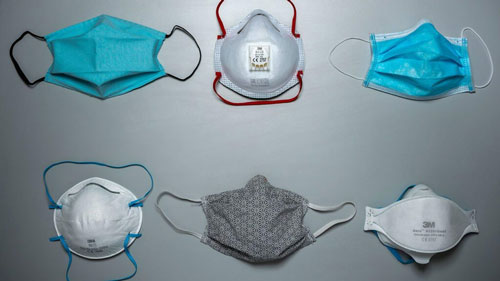RESEARCHERS have assessed how effective various medical and consumer-grade masks are at protecting the wearer from exposure to particles similar in size to SARS-CoV-2.
In a new study, scientists have analyzed how effective consumer-grade masks, medical masks, and modified medical masks are at protecting the wearer from particles of a similar size to SARS-CoV-2.
The research, which appears in the journal JAMA Internal Medicine, provides more information for the public and clinicians on which masks to wear, and what modifications are likely to be effective.
Stay informed with live updates on the current Covid-19 outbreak and visit our coronavirus hub for more advice on prevention and treatment.
SARS-CoV-2, the virus that causes Covid-19, primarily infects a person’s respiratory tract. As the infection develops, a high amount of the virus builds up in a person’s saliva and other respiratory secretions. This explains a fundamental way in how the virus spreads: being ejected from a person with the infection via their nose or mouth as they talk, sing, sneeze, or cough. Wearing masks to interrupt this route of transmission has been increasingly recommended by scientists, clinicians, and government agencies.
For example, according to Dr. Robert R. Redfield, Director of the Centers for Disease Control and Prevention (CDC), “[c]loth face coverings are one of the most powerful weapons we have to slow and stop the spread of the virus — particularly when used universally within a community setting.”
“All Americans have a responsibility to protect themselves, their families, and their communities,” he emphasizes.
Experts believe face masks effectively reduce viral transmission because they block a person from expelling the virus and help prevent a person from receiving the expelled virus.
The protective effects of face masks are important for medical professionals, who are particularly vulnerable to the virus due to their high rates of exposure while working in clinical settings.
Many clinicians have access to medical procedure masks, while individuals sometimes modify them with the intention of boosting their ability to block viral transmission. However, it is not clear which modifications are the most effective. Members of the public have access to a wide variety of masks, including home-made and improvised variants. Understanding which types of face coverings are most effective at blocking the virus is important as it enables people to increase their protection against the virus.










